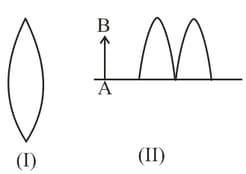EASY
NEET
IMPORTANT
Earn 100
In the figure a thin lens of focal length is shown. The lens is cut into two equal parts and arranged as shown in the figure An object of height is placed at a distance of then, height of the final image will be


50% studentsanswered this correctly
Important Questions on Ray Optics
EASY
NEET
IMPORTANT
MEDIUM
NEET
IMPORTANT
EASY
NEET
IMPORTANT
MEDIUM
NEET
IMPORTANT
MEDIUM
NEET
IMPORTANT
EASY
NEET
IMPORTANT
EASY
NEET
IMPORTANT
EASY
NEET
IMPORTANT
